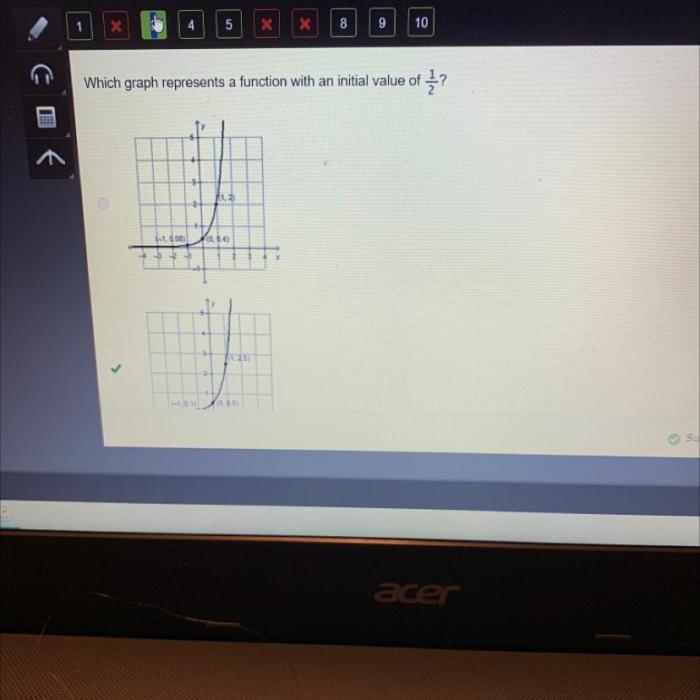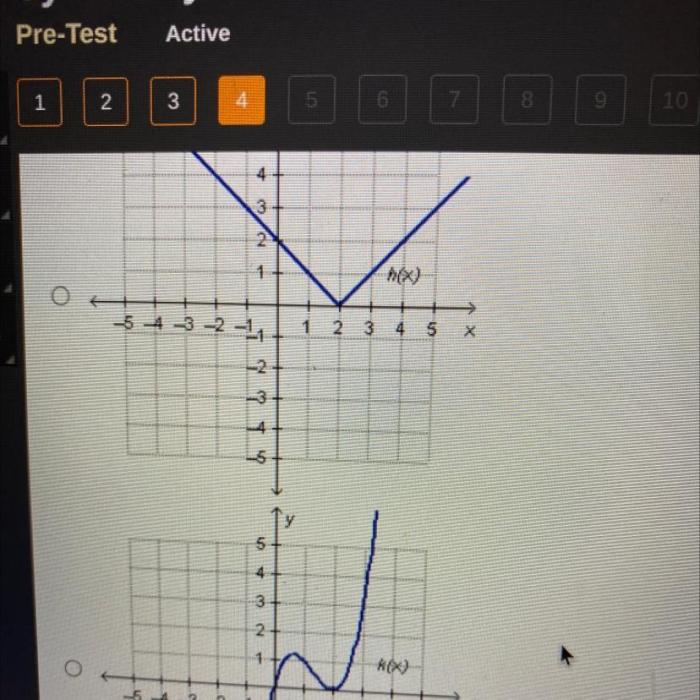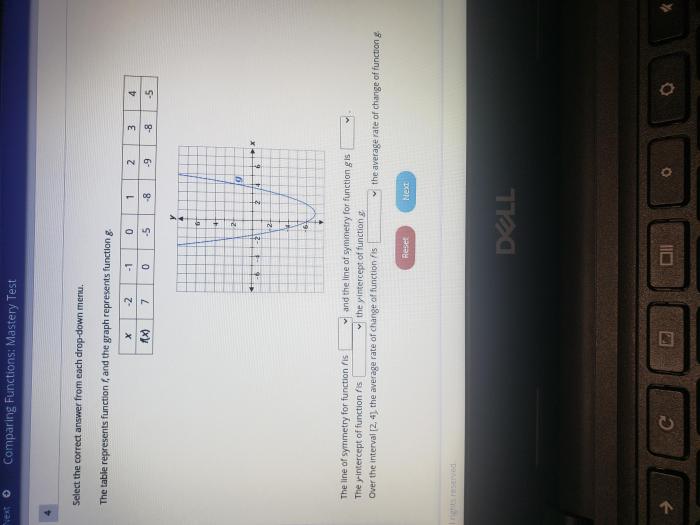Which graph represents a function with an initial value of – Embark on a mathematical journey to unravel the intricacies of functions and their initial values. This exploration delves into the visual representation of functions through graphs, empowering you to identify and analyze their starting points with precision.
Through a comprehensive examination of various graph types, including linear, quadratic, and exponential, we will uncover the secrets of discerning initial values. Tables of values, intercepts, and asymptotes will serve as our tools to unravel the hidden patterns within these graphical representations.
Identifying the Initial Value

The initial value of a function is the value of the function at the input value of zero. To identify the initial value from a graph, locate the point where the graph intersects the y-axis. The y-coordinate of this point represents the initial value.
For example, consider the graph of the function f(x) = x + 2. The graph intersects the y-axis at the point (0, 2), so the initial value of the function is 2.
Types of Graphs
Functions with an initial value can be represented by various types of graphs, including:
- Linear graphs: These graphs represent functions of the form f(x) = mx + b, where m is the slope and b is the y-intercept. The initial value is equal to the y-intercept.
- Quadratic graphs: These graphs represent functions of the form f(x) = ax^2 + bx + c, where a, b, and c are constants. The initial value is equal to the value of c.
- Exponential graphs: These graphs represent functions of the form f(x) = a^x, where a is a positive constant. The initial value is equal to the value of a.
Table of Values

A table of values can be created for a function with an initial value to analyze its behavior. The table lists the input values and the corresponding output values for the function.
For example, consider the function f(x) = 2x + 1. The following table shows the values of the function for x = 0, 1, 2, and 3:
| x | f(x) |
|---|---|
| 0 | 1 |
| 1 | 3 |
| 2 | 5 |
| 3 | 7 |
Intercepts and Asymptotes
Intercepts and asymptotes are important for identifying the initial value of a function:
- y-intercept:The y-intercept is the point where the graph intersects the y-axis. The y-coordinate of the y-intercept is equal to the initial value of the function.
- Asymptotes:Asymptotes are lines that the graph approaches but never touches. Horizontal asymptotes indicate the limit of the function as the input value approaches infinity or negative infinity. The y-coordinate of a horizontal asymptote can provide information about the initial value of the function.
Transformations: Which Graph Represents A Function With An Initial Value Of

Transformations such as translations and reflections can affect the initial value of a function:
- Translations:Vertical translations shift the graph up or down, while horizontal translations shift the graph left or right. Vertical translations change the initial value of the function, while horizontal translations do not.
- Reflections:Reflections over the x-axis or y-axis change the shape of the graph but do not affect the initial value of the function.
Applications

Understanding the initial value of a function is crucial in various real-world applications, including:
- Finance:In finance, the initial value of a function can represent the initial investment or loan amount.
- Science:In science, the initial value of a function can represent the initial concentration of a substance or the initial velocity of an object.
- Engineering:In engineering, the initial value of a function can represent the initial displacement or the initial force applied to a system.
General Inquiries
What is the initial value of a function?
The initial value of a function is the value of the function at the input value of zero.
How can I identify the initial value of a function from its graph?
The initial value of a function can be identified by finding the y-intercept of the graph, which is the point where the graph intersects the y-axis.
What is the difference between a linear, quadratic, and exponential function?
Linear functions have a constant rate of change, quadratic functions have a parabolic shape, and exponential functions have a constant percentage rate of change.